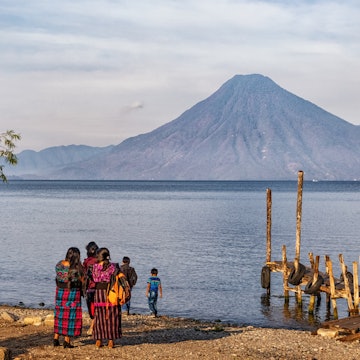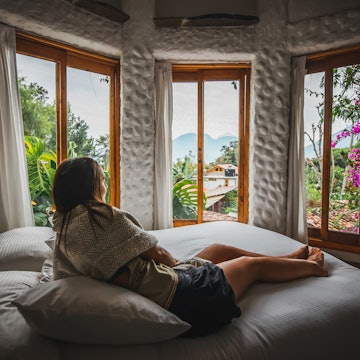
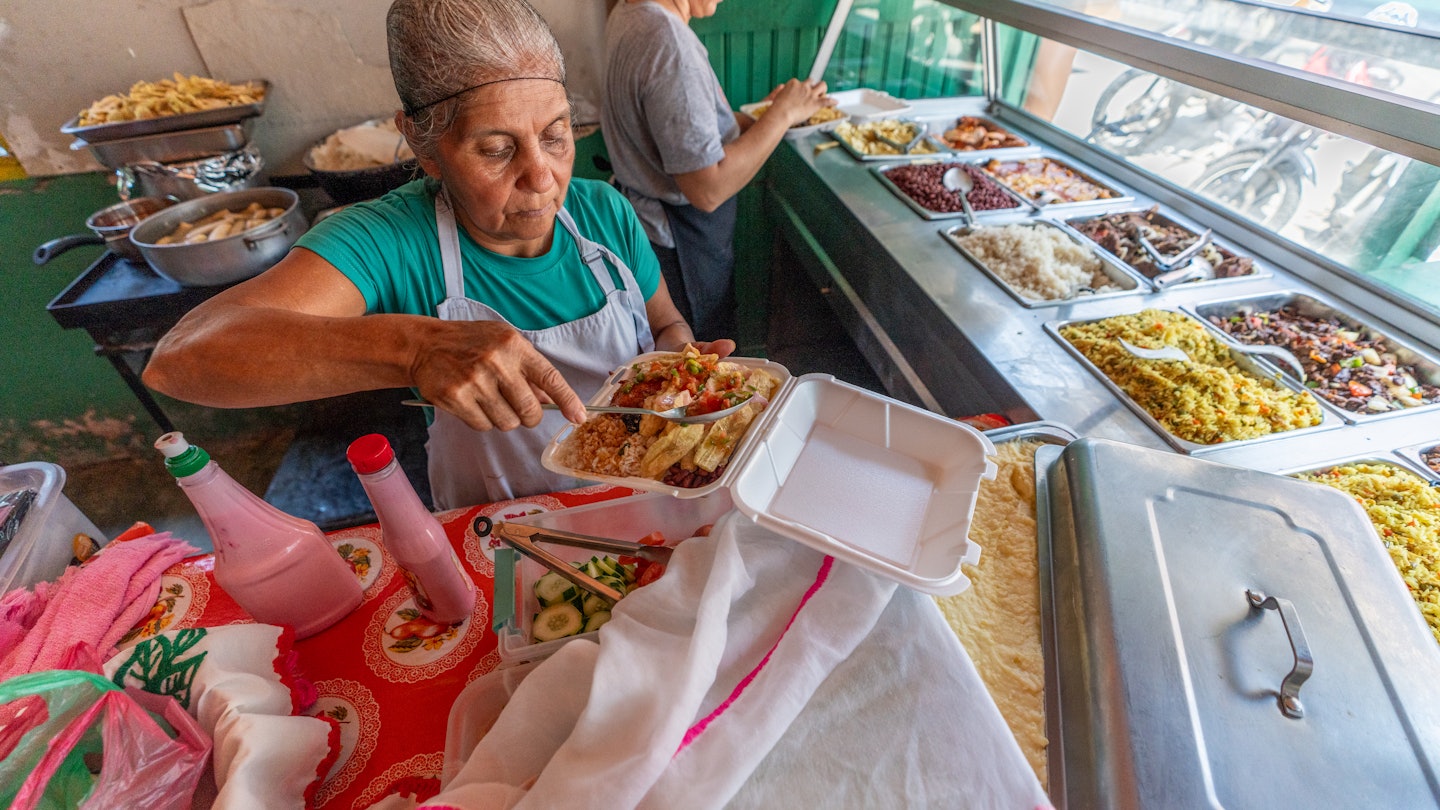
Preparing lunch at Los Angeles Almuerzos in Tela, Honduras. Fritz Pinnow/Lonely Planet
With tropical coasts on both the Caribbean and Pacific, Honduran cuisine blends Indigenous, Spanish and Afro-Caribbean influences. Staples like coconut, plantains and beans reflect the country’s geography and its history.
Here’s our guide to the best eating and drinking options in Honduras.
Try the street snacks
Whether you’re on a beach or a bus, vendors will approach with everything from mango slices with chili and lime to bags of fresh fruit or dense, cookie-like Honduran quesadillas (not to be confused with the Mexican version).
These salty dough discs with caramelized cheese on top strike an interesting balance of sweet and salty.
I love to eat these with a good coffee during lunch, and it is my overall go-to snack while traveling.
When it’s hot, look for snow cones topped with syrup and condensed milk.
Where to try it: You’re likely to see street snack vendors at toll booths, where the traffic builds up or at the beaches.
Get messy with the notorious pollo chuco
Next to the baleada, almost at the same level of popularity, the pollo chuco is one of the most sought-after foods in Honduras.
Directly translated to “dirty chicken”, the meal consists of a half or entire fried chicken sitting on a pile of tajadas, topped off with chismol (a chunky sauce made of chopped tomato, onion, radish and vinegar) and an array of homemade sauces.
It's said the name comes from the mess it makes — it's typically eaten with your hands. The meal is not designed to be eaten elegantly, but to really chow down on a gloriously greasy bowl of comfort food full of flavor.
Where to try it: You can find pollo chuco almost everywhere. If a shop/food stand's name has the word pollo (chicken) in it, you can be 90% sure they will serve it.
Where to try it: San Pedro Sula: Pollo Chuco 504.HN, Pollos Mamavila and Pollos Mayra.

Grab a baleada
Originally the primary meal for the banana workers in the northern parts of Honduras in the early 1900s, the baleada has become very popular in Honduras and is now considered the national dish.
The baleada sencilla (literally meaning “simple”) is a folded flour tortilla with frijoles (red bean paste), a bit of cheese and mantequilla (a cream similar to crème fraîche).
But it doesn’t stop there. Every stand offers a variety of ingredients you can add to the baleada sencilla, such as avocado, scrambled egg, onion, different types of meat and anything else the stand has on hand that day.
There’s an abundance of baleada stands all around the country, mostly near other food stands or in malls or near the local center of the city or town.
They can be identified by the specific clapping sound of the workers preparing the tortilla by tossing it from hand to hand.
Most locals will have strong opinions on where to find the best baleada and will debate which combinations are the tastiest.
Often, people swear their loyalties to stands they have gone to since they were kids, where they order the one special combination that hits the spot. So it is always wise to consult locals on their favorite baleada place and go-to combination.
Baleadas are generally eaten for breakfast (with a coffee) or for dinner. Stands are typically closed during lunchtime.
Where to try it: San Pedro Sula/Tegucigalpa: Baleadas King, Baleadas Express, Estelinas. Tela: Tia Carmen. La Ceiba: Baleadas del Parque.
Experience everything coco
On the northern coast, coconut is a prized ingredient and is used for almost everything. The Garifuna communities, who are mainly spread along the northern coast, offer a variety of products made from coconut, such as coconut bread, tabletas – caramelized coconut snacks and coconut oil.
Where to try it: You’ll also find vendors all around the country slicing open coconuts for a refreshing drink, then cracking them to scoop out the soft meat inside.
Carefully taste gifiti
The Garifuna have developed and perfected a drink, originally used for ceremonial purposes, called gifiti. There’s no fixed or original recipe for making gifiti, so each vendor uses their own recipe of herbs infused with the alcohol, distilled from sugarcane.
Where to try it: You can visit any Garifuna community like Tornabe or Triunfo de la Cruz, or speak to locals in (northern) coastal cities. One brand that has managed to even get exported is Babuno, which can be bought in the small bar of Julio Cacho.
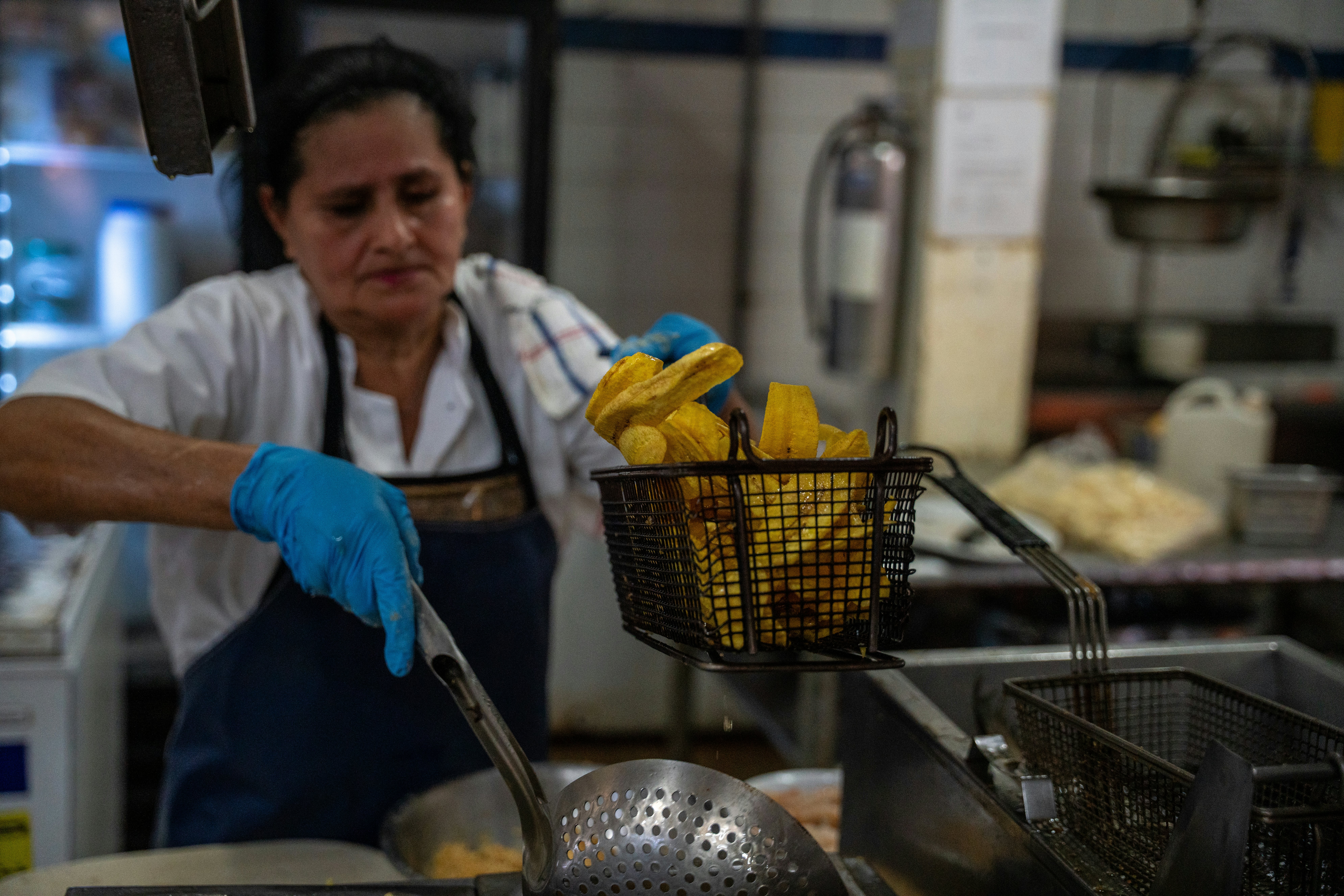
Taste all the 50 shades of plantain
The plantain is the starchy cousin of the regular sweet banana and is prepared in many different ways to accompany almost every meal. They can be prepared as tajadas – thinly sliced and deep-fried into a crunchy, chip-like snack.
Or, the plantain is cut into chunks, flattened (often with a bottle) and then fried, resulting in what is called tostones in Honduras.
For a different taste altogether, the ripe plantain is cooked in an oven at low heat, resulting in a warm, soft and sweet side dish, known as platano maduro.
Where to try it: San Pedro Sula: El Estadio Food Truck Park. Tegucigalpa: Tegus Food Truckers. Tela: Cesar Mariscos, Maya Vista. La Ceiba: Plaza La Ceiba.
Disappear into the cute coffee corners
Honduras is Central America's largest coffee producer and ranks fourth in global coffee export volume, whereby the large majority (95%) is produced in family farms (small holders).
So in Honduras, coffee quality is taken very seriously, and there are plenty of casual coffee shops serving exceptional brews.
Recently, small cafes run by young coffee and design enthusiasts have been popping up in the cities, which are perfect for having a nice breakfast, snack and exceptional coffee. Also, a good place to get some remote work done.
Compared to other coffees produced in the world, Honduran coffee is famous for having a rather balanced, sweet and clean profile. When it is prepared in the traditional way with what is called “the sock” (a cloth filter), the bitter notes are less dominant.
Where to try it: Most of the small coffee shops are in San Pedro Sula, such as Atelier Caramella, The Golden Pig, The Coffee Market and Kaahwe. But you will find the larger chains everywhere: Espresso Americano (Honduras’ own Starbucks), Welchez and Cafeteo. In Tegucigalpa: De la Montaña Café, 80eneros café and Café Con Libros.
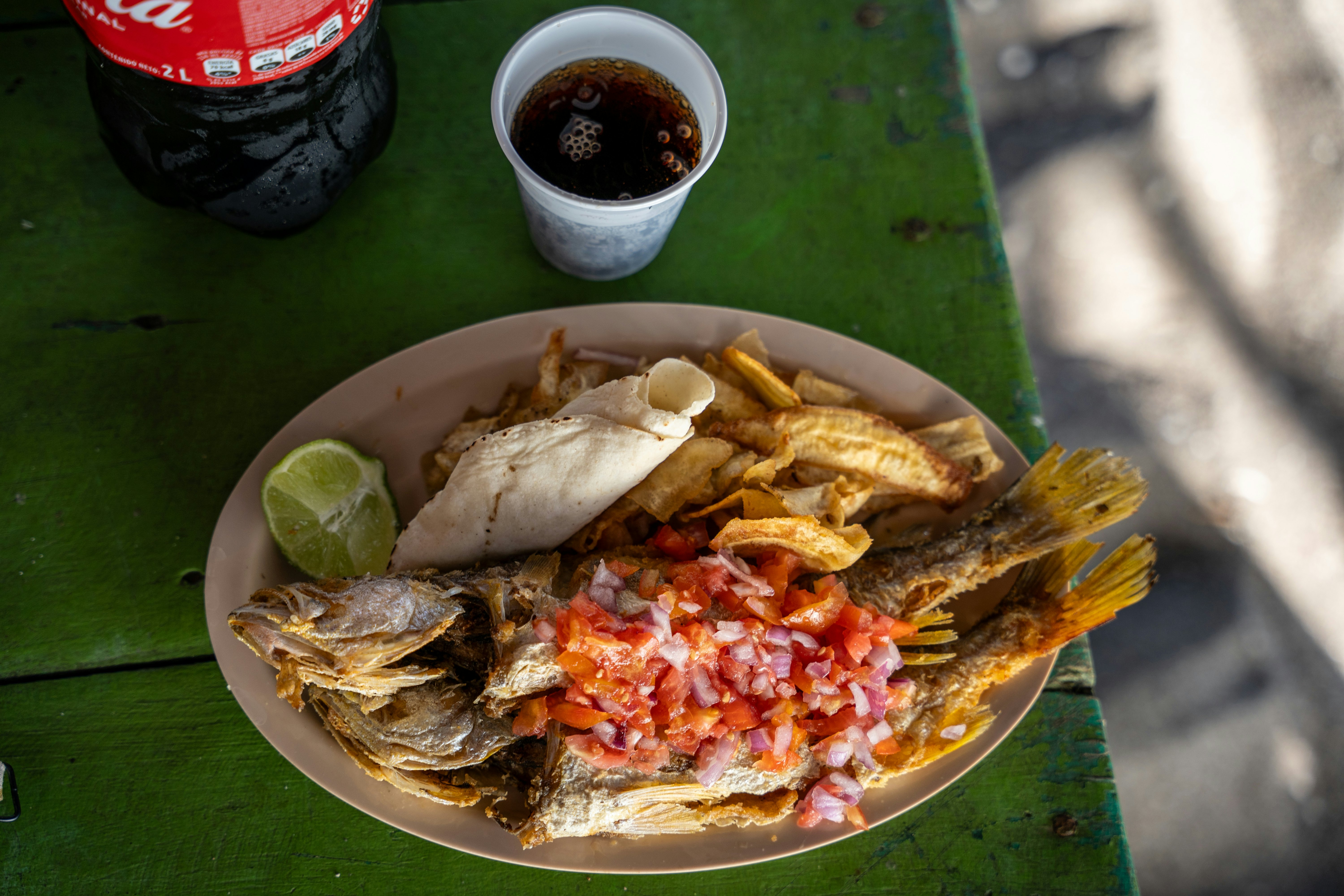
Indulge in Northern and Southern seafood delicacies
In both the northern (Caribbean) and southern (Pacific) coasts, seafood is very popular and is prepared in many different ways.
The classic meal on both coasts is the pescado frito (fried fish). The only difference is the type of fish that’s fried, since they are usually freshly caught by the community and then sold to the restaurants/shops directly.
Other classics include a sopa de mariscos, which is prepared with coconut and all kinds of seafood like conch, fish, shrimp, crab and sometimes lobster or mussels.
You can also order the sopa de caracol, which inspired a world-famous song and features what can only be translated as “sea snail,” which has a chewy, muscle-like consistency.
On the Bay Islands, you can often find lionfish on restaurant menus — and for good reason. Not only is this spiny fish surprisingly tasty, but it’s also an invasive species that’s actively hunted across the Caribbean to protect native marine life.
Tip: Ask for a fish that was caught from the sea and avoid “farmed” fish, such as tilapia.
Where to try it: In the quiet beach cities, like Tela, you can try any of the places along the beach, but if you want atmosphere, a great example would be Cesar Mariscos. You can also always visit the Garifuna communities (who have a proud fishing culture), such as Tornabe and Triunfo de la Cruz. On the road between San Pedro Sula and Tegucigalpa, you can find an abundance of great fish stands next to Lake Yojoa. In the south, you can visit places such as Cedeño, also with amazing sunsets every evening.
For vegetarians and vegans
Vegans and vegetarians may find few options outside major cities. Some specialized shops exist, though often at higher prices. On the coast, pescatarians fare better with locally caught seafood.
You can always ask and order baleadas cencillas (simple), and add vegan or vegetarian options, such as onions or avocado.
Tip: To avoid misunderstandings, always double-check: In Honduras, “meat” (carne) refers only to beef, so clarify if you don’t eat chicken, pork or fish.
A year in food
December – Tamales are a Christmas staple, made from corn dough and filled with chicken, pork or vegetables, wrapped in banana leaves.
February to May – Mangoes flood roadside stalls.
April to July – Strawberries arrive.
August to September – Jocotes and anonas dominate the market.
August to January – Look for bunches of sweet lichas (rambutan).










